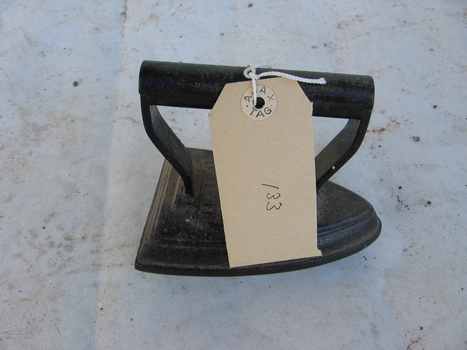Historical information
Sad irons, also known as flat irons or smoothing irons, were essential household tools in the 18th, 19th, and early 20th centuries, before electric irons became widespread. They were heated on a stove or open fire and used to press clothing and linens.
This specific model features a fixed metal handle, meaning it would have required the use of a cloth or pad to avoid burns. Some later models had detachable wooden handles, which provided better insulation and comfort.
Sad irons were often used in pairs, with one being heated while the other was in use, ensuring a continuous ironing process.
Physical description
The item is a cast iron sad iron (flat iron), used before the invention of electric irons. It consists of:
A solid, triangular cast-iron base, designed to retain heat for pressing fabric. The base has a slightly curved front edge to facilitate smooth gliding over garments.
A cast-iron handle, which is fixed and integrated into the body of the iron. This design means the handle would also become hot, requiring the use of a cloth or pad to hold it while ironing.
The iron has a blackened surface, which may indicate it was blackened intentionally to prevent rust or restored with a protective coating.
The overall shape and style suggest it was used in the late 19th or early 20th century.

